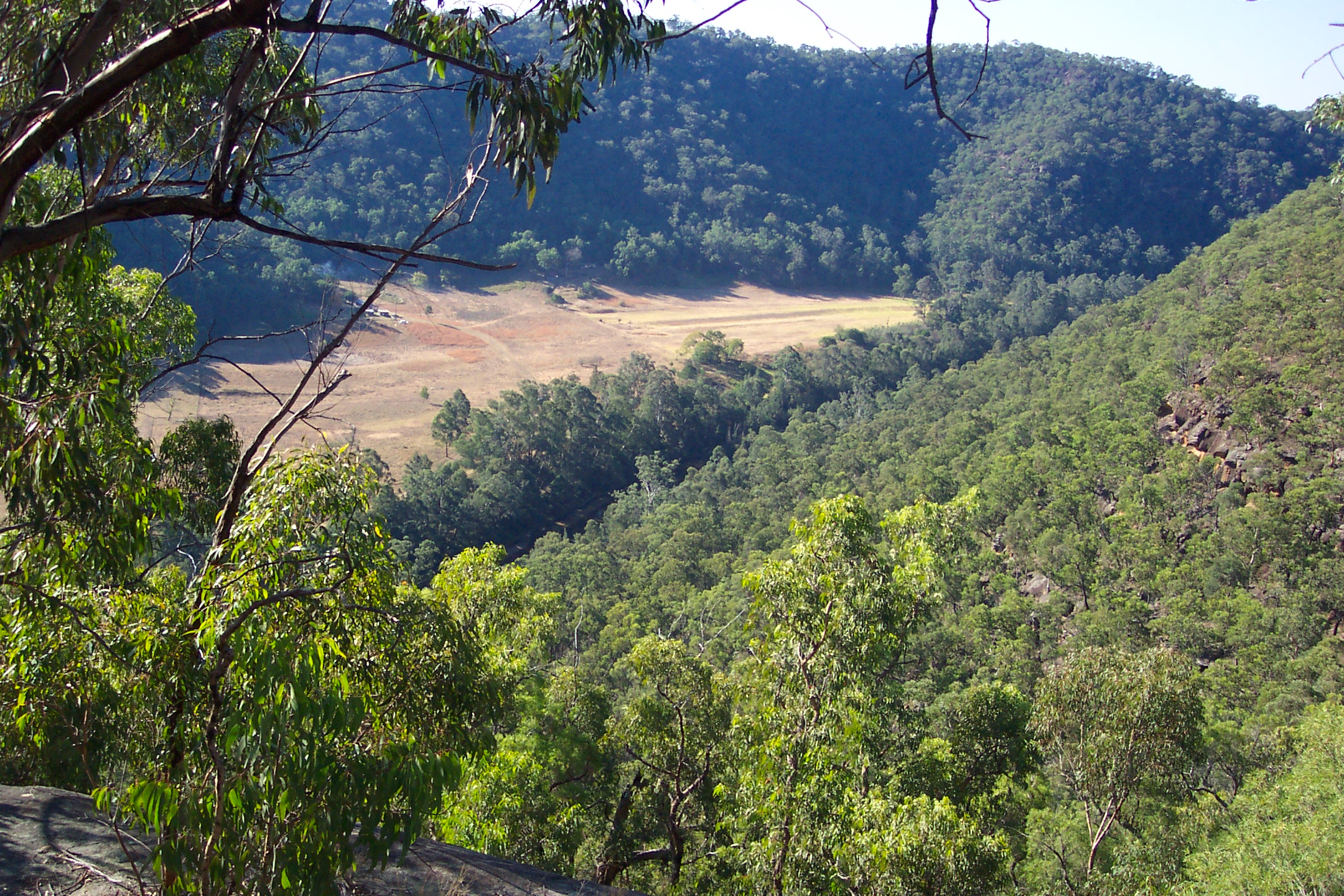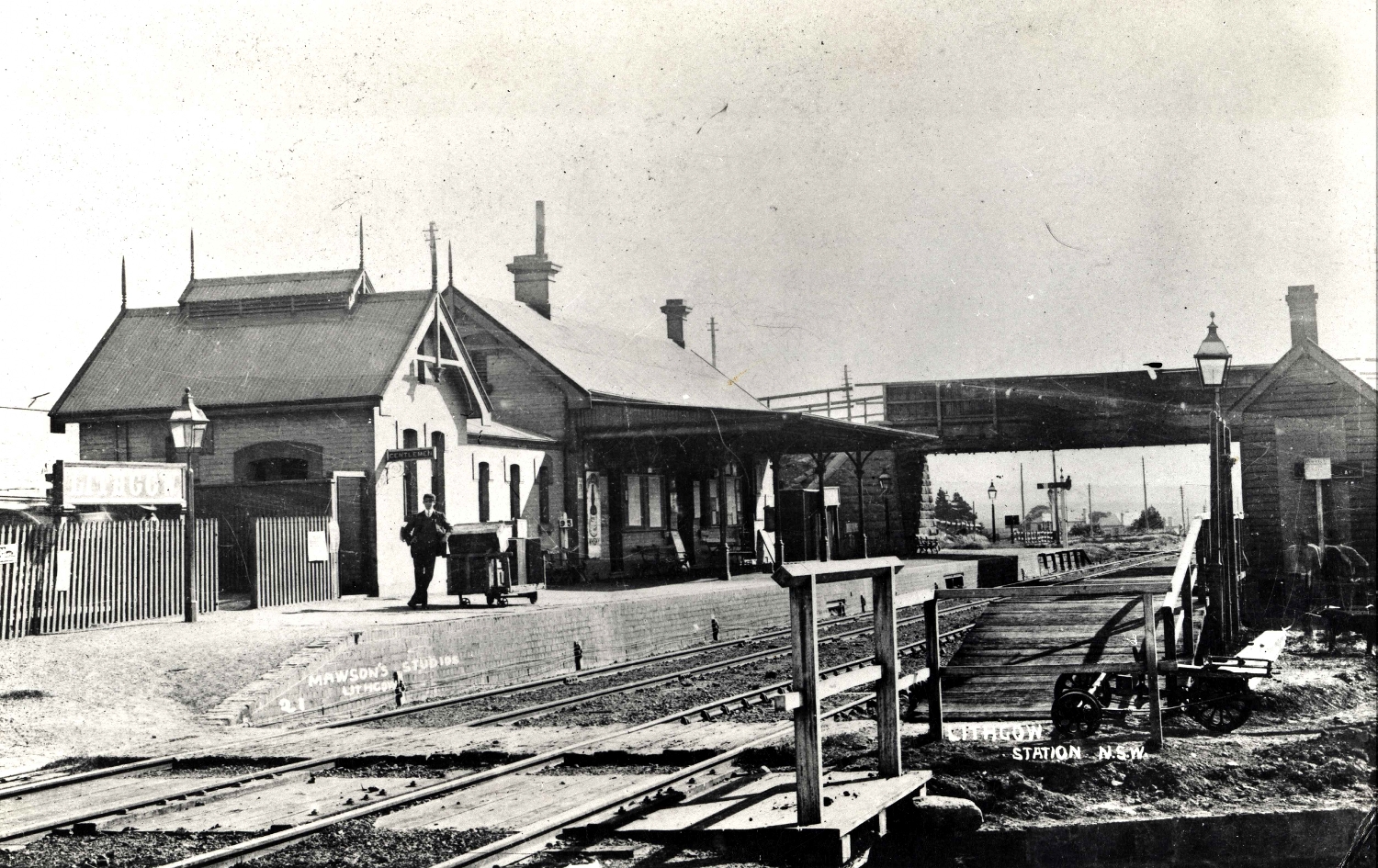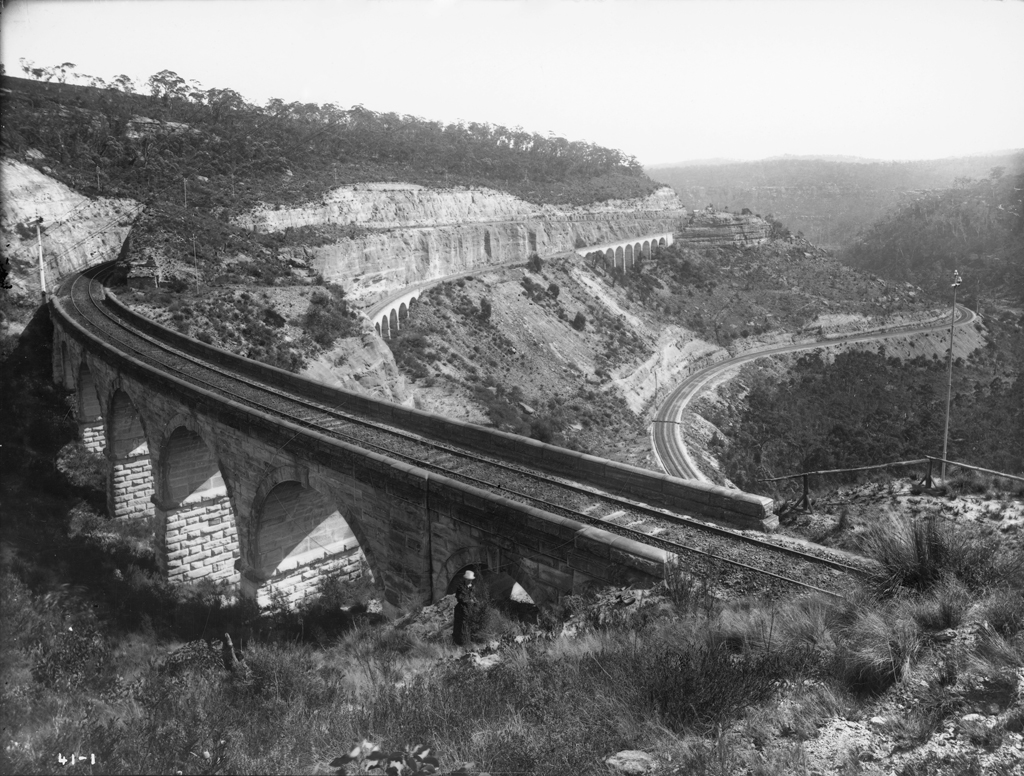|
Lithgow, New South Wales
Lithgow is a town in the Central Tablelands of New South Wales, Australia and is the administrative center of the City of Lithgow local government area. It is located in a mountain valley named Lithgow's Valley by John Oxley in honour of William Lithgow, the first Auditor-General of New South Wales. Lithgow is on the Great Western Highway, about west of Sydney, or via the old mountain route, Bells Line of Road, from Windsor. At June 2021 Lithgow had an estimated urban population of 21,556. Estimated resident population, 30 June 2018. Lithgow is surrounded by a varied landscape characterised by seven valleys which include national parks, one of which, the Blue Mountains National Park, is a World Heritage Area. The Wollemi National Park is home to the Jurassic-age tree the Wollemi Pine, which was found growing in a remote canyon in the park. Location The city sits on the western edge of the sandstone country of the Blue Mountains and is usually considered the first true ... [...More Info...] [...Related Items...] OR: [Wikipedia] [Google] [Baidu] |
Cook County, New South Wales
Cook County was one of the original Nineteen Counties in New South Wales and is now one of the 141 Cadastral divisions of New South Wales. It includes the area to the west of Sydney in the Blue Mountains (Australia), Blue Mountains, between the Colo River in the north, and the Coxs River in the south and west, encompassing Lithgow, New South Wales, Lithgow, Mount Victoria, New South Wales, Mount Victoria, Katoomba, New South Wales, Katoomba, Wentworth Falls, New South Wales, Wentworth Falls, Lawson, New South Wales, Lawson and most of the other towns in the Blue Mountains. The Nepean River is the border to the east. Before 1834, the area was part of the Westmoreland, Northumberland and Roxburgh countie Cook County was named in honour of the navigator James Cook (1728–1779). The Electoral district of Cook and Westmoreland was the first state electoral district for the area, between 1856 and 1859. Parishes within this county A full list of parishes found within this county; thei ... [...More Info...] [...Related Items...] OR: [Wikipedia] [Google] [Baidu] |
Wollemi National Park
The Wollemi National Park () is a protected national park and wilderness area that is located in the northern Blue Mountains and Lower Hunter regions of New South Wales, in eastern Australia. The park, the second largest national park in New South Wales, contains the Wollemi Wildernessthe largest such wilderness area in Australiaand is situated approximately northwest of Sydney. The Wollemi National Park is one of the eight protected areas that, in 2000, was inscribed to form part of the UNESCO World Heritagelisted Greater Blue Mountains Area. The Wollemi National Park is the most northwesterly of the eight protected areas within the World Heritage Site. The national park forms part of the Great Dividing Range. The only known living wild specimens of the Wollemi Pine (''Wollemia nobilis'') were discovered in 1994. Special efforts were made to protect the trees when the 2019-20 Australian bushfires burned through the park. The national park is bounded to the north by the Go ... [...More Info...] [...Related Items...] OR: [Wikipedia] [Google] [Baidu] |
Ten Tunnels Deviation
The Ten Tunnels Deviation is a heritage-listed section of the Main Western Line between Newnes Junction and Zig Zag stations in Lithgow, New South Wales, Australia. It was designed and built by the New South Wales Government Railways and built from 1 June 1908 and 16 October 1910. It is also known as Great Zig Zag Railway deviation tunnels and Bell to Zig Zag Ten Tunnel Railway Deviation. It was added to the New South Wales State Heritage Register on 2 April 1999. When they opened in 1910, the tunnels replaced the Lithgow Zig Zag, which limited the length of trains over the mountains and required two changes in direction. The deviation comprises ten tunnels of varying length from over . The work also included the excavation of a cutting, the deepest cutting on the NSW rail system. Journey times were reduced by between 20 and 30 minutes. History The original 1869 Main Western single line headed north from Mount Victoria along the ridge known as the Darling Causeway. It t ... [...More Info...] [...Related Items...] OR: [Wikipedia] [Google] [Baidu] |
Lithgow Railway Station
Lithgow railway station is a heritage-listed former station master's residence and railway station and now guest accommodation and railway station located on the Main Western line at Railway Parade, Lithgow, City of Lithgow, New South Wales, Australia. It was designed and built by New South Wales Government Railways and built from 1924 to 1925. It is also known as Lithgow Railway Station Group and Residence and Eskbank East. The property was added to the New South Wales State Heritage Register on 30 August 2013. The station has frequent NSW TrainLink services running to and from Sydney Central. History With the completion of the Lithgow Zig Zag in 1869, the Western railway's terminus moved from to Bowenfels, signifying the successful crossing of the Blue Mountains. Whilst the railway would continue west, Lithgow proved to be an important destination in itself due to coal and iron ore deposits. The line opened in 1869 but there was no station for Lithgow until 1877. The fir ... [...More Info...] [...Related Items...] OR: [Wikipedia] [Google] [Baidu] |
Bowenfels Railway Station
The Bowenfels railway station is a heritage-listed disused railway station and now visitor's centre and restaurant located on the Main Western line in Bowenfels, City of Lithgow, New South Wales, Australia. It was designed by John Clifton and the New South Wales Government Railways and built from 1869 to 1869 by G. Watsford, NSW Government Railway. It is also known as the Bowenfels Railway Station and Stationmaster's House and Old Station Masters Residence and Station. It was added to the New South Wales State Heritage Register on 2 April 1999. The sandstone station opened on 18 October 1869 with the construction of the railway and was electrified in 1957 as part of the Blue Mountains line electrification programme. The electrification was to continue to Wallerawang but was curtailed west of Bowenfels station.Bowenfels Sta ... [...More Info...] [...Related Items...] OR: [Wikipedia] [Google] [Baidu] |
Lithgow Zig Zag
The Lithgow Zig Zag is a heritage-listed former zig zag railway line built near Lithgow on the Great Western Line of New South Wales in Australia. The zig zag line operated between 1869 and 1910, to overcome an otherwise insurmountable climb and descent on the western side of the Blue Mountains. It was designed by John Whitton and built from 1863 to 1869 by Patrick Higgins as contractor. It is also known as the Great Zig Zag Railway and Reserves and Zig Zag Railway. The property is owned by Department of Planning and Infrastructure (State Government). It was added to the New South Wales State Heritage Register on 2 April 1999. Part of the railway line is now used by the Zig Zag Railway, a narrow gauge tourist railway. History Construction The original plan by the Engineer-in-Charge of New South Wales Government Railways, John Whitton, had been to build a tunnel. However, this was beyond the resources of the Colonial Government at the time. The zig zag alternative ... [...More Info...] [...Related Items...] OR: [Wikipedia] [Google] [Baidu] |
Blast Furnace At Lithgow, N
Blast or The Blast may refer to: *Explosion, a rapid increase in volume and release of energy in an extreme manner *Detonation, an exothermic front accelerating through a medium that eventually drives a shock front Film * ''Blast'' (1997 film), starring Andrew Divoff * ''Blast'' (2000 film), starring Liesel Matthews * ''Blast'' (2004 film), an action comedy film * ''Blast!'' (1972 film) or ''The Final Comedown'', an American drama * ''BLAST!'' (2008 film), a documentary about the BLAST telescope * '' A Blast'', a 2014 film directed by Syllas Tzoumerkas Magazines * ''Blast'' (magazine), a 1914–15 literary magazine of the Vorticist movement * ''Blast'' (U.S. magazine), a 1933–34 American short-story magazine * ''The Blast'' (magazine), a 1916–17 American anarchist periodical Music * Blast (American band), a hardcore punk band * Blast (Russian band), an indie band * ''Blast'' (album), by Holly Johnson, 1989 * ''The Blast'' (album), by Yuvan Shankar Raja, 1999 * "The ... [...More Info...] [...Related Items...] OR: [Wikipedia] [Google] [Baidu] |
Zig Zag Railway
The Zig Zag Railway is an Australian heritage railway, situated near Lithgow, New South Wales. It was opened by the not-for-profit Zig Zag Railway Co-op as an unpaid volunteer-staffed heritage railway in October 1975, using the alignment of the Lithgow Zig Zag line that formed part of the Main Western line between 1869 and 1910. The line climbs the western flank of the Blue Mountains, using railway zig zags to gain height. Operation of the heritage railway was suspended in 2012 following accreditation issues with the Government of New South Wales. The railway was aiming to resume services in October 2013, but was then severely damaged during the 2013 NSW Bushfires and then subsequently by torrential rain. Repairs are ongoing and trials of restored rail vehicles and track commenced in August 2016 and it was planned to re-commence limited heritage operations in 2019, until the 2019-2020 bushfires damaged key infrastructure. The COVID-19 pandemic further delayed restoration a ... [...More Info...] [...Related Items...] OR: [Wikipedia] [Google] [Baidu] |
Blue Mountains Line
The Blue Mountains Line (BMT) is an inter urban commuter rail service operated by NSW TrainLink serving the Blue Mountains region of New South Wales, Australia. The line travels west from Sydney to the major town of Katoomba and on to Mount Victoria, Lithgow and Bathurst. Mount Victoria is the terminus for most electric services, but some services terminate at Lithgow instead. Two express services per day in each direction, known as the Bathurst Bullet, extend to the regional city of Bathurst, which is supplemented by road coaches connecting Bathurst to Lithgow. Due to electrification limits at Lithgow, the Bathurst Bullet is run using the Endeavour railcars, which operate on diesel. The Blue Mountains Line operates over a mostly duplicated section of the Main Western line. As such, the tracks are also traversed by the '' Central West XPT'', ''Outback Xplorer'' and ''Indian Pacific'' passenger services and by freight trains. History The Blue Mountains line is a section ... [...More Info...] [...Related Items...] OR: [Wikipedia] [Google] [Baidu] |
NSW TrainLink
NSW TrainLink is a train and coach operator in Australia, providing services throughout New South Wales and the Australian Capital Territory, along with limited interstate services into Victoria, Queensland and South Australia. Its primary intercity and regional services are spread throughout five major rail lines, operating out of Sydney's Central railway station. NSW TrainLink was formed on 1 July 2013 when RailCorp was restructured and CountryLink was merged with the intercity services of CityRail. History In May 2012, the Minister for Transport announced a restructure of RailCorp. On 1 July 2013, NSW TrainLink took over (a) the operation of regional rail and coach services previously operated by CountryLink; (b) non-metropolitan Sydney services previously operated by CityRail; and (c) responsibility for the Main Northern railway line from Berowra railway station to Newcastle station, the Main Western railway line from Emu Plains railway station to Bathurst railway station, ... [...More Info...] [...Related Items...] OR: [Wikipedia] [Google] [Baidu] |
Main Western Railway Line, New South Wales
The Main Western Railway is a major railway in New South Wales, Australia. It runs through the Blue Mountains, Central West, North West Slopes and the Far West regions. It is with operational & under construction & repairs. Description of route The Main Western Railway Line is a westwards continuation of what is known as the Main Suburban Line between Sydney Central station and Granville. The line is six electrified railway tracks between Central and Strathfield, where the Main Northern line branches off. The line is then four tracks as it passes through Lidcombe, where the Main Southern line branches off, and then through the Sydney suburbs of Parramatta and Blacktown, where the Richmond railway line branches off. At St Marys, the line becomes two tracks as it passes through Penrith and Emu Plains, the extent of Sydney suburban passenger train operation. From Emu Plains, the line traverses the Blue Mountains passing through Katoomba and Mount Victoria before d ... [...More Info...] [...Related Items...] OR: [Wikipedia] [Google] [Baidu] |
Blue Mountains (Australia)
The Blue Mountains are a mountainous Regions of New South Wales, region and a mountain range located in New South Wales, Australia. The region borders on Sydney's metropolitan area, its foothills starting about west of centre of City of Sydney, the state capital, close to Penrith, New South Wales, Penrith on the outskirts of Greater Sydney region. The public's understanding of the extent of the Blue Mountains is varied, as it forms only part of an extensive mountainous area associated with the Great Dividing Range. As defined in 1970, the Blue Mountains region is bounded by the Nepean River, Nepean and Hawkesbury River, Hawkesbury rivers in the east, the Coxs River and Lake Burragorang to the west and south, and the Wolgan River, Wolgan and Colo River, Colo rivers to the north. Geologically, it is situated in the central parts of the Sydney Basin. The ''Blue Mountains Range'' comprises a mountain range, range of mountains, plateau escarpments extending off the Great Dividing ... [...More Info...] [...Related Items...] OR: [Wikipedia] [Google] [Baidu] |
.jpg)







.jpg)
